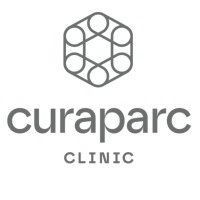Coxarthrosis: Recognize symptoms early and treat them effectively
Symptoms and treatment of coxarthrosis

introduction
Coxarthrosis, also known as hip osteoarthritis, is a degenerative disease of the hip joint that can lead to significant pain and limited mobility. It is one of the most common forms of osteoarthritis and affects millions of people worldwide, especially older adults. Early recognition of symptoms and effective treatment are crucial to improving the quality of life of those affected and slowing the progression of the disease. In this comprehensive blog post, we will examine the symptoms of coxarthrosis in detail, how to detect it early, and what modern treatment methods are available.
What is coxarthrosis?
Coxarthrosis is a form of osteoarthritis that affects the hip joint. It arises from the progressive breakdown of the articular cartilage, which protects the ends of the bones and enables smooth movement. When cartilage breaks down, bones rub directly against each other, causing pain, swelling, and stiffness. The condition can occur on one or both sides and has various causes, including genetics, obesity, injuries and inflammatory diseases.
Causes of coxarthrosis
The development of coxarthrosis can be influenced by a variety of factors. The most common causes include:
Genetic predisposition
Genetic factors play an important role in the development of coxarthrosis. A family history of osteoarthritis can increase your risk of developing the disease yourself. Certain genetic markers may increase susceptibility to articular cartilage breakdown.
Overweight and obesity
Obesity is a significant risk factor for the development of coxarthrosis. Overweight people put extra pressure on their hip joints, which accelerates cartilage breakdown. Studies show that weight loss can significantly reduce the risk and symptoms of coxarthrosis.
Injuries and trauma
Injuries to the hip joint, such as fractures or severe bruises, can damage the cartilage and lead to the development of osteoarthritis. Sports injuries, especially among high-performance athletes, also increase the risk.
Inflammatory diseases
Chronic inflammation, such as that found in rheumatoid arthritis, can break down joint cartilage and lead to osteoarthritis. Inflammatory processes in the body can directly damage cartilage and affect joint health.
Old
The risk of coxarthrosis increases with increasing age. The articular cartilage is subject to a natural wear process that is accelerated by aging.
Gender
Women are more commonly affected by coxarthrosis than men, which is attributed to hormonal differences. After menopause, women's risk increases significantly, due to the decline in protective estrogen levels.
Early symptoms of coxarthrosis
Early detection of coxarthrosis is crucial in order to be able to take appropriate treatment measures in a timely manner. Early symptoms include:
Hip pain
The first sign of coxarthrosis is often pain in the hip, which initially only occurs when you put weight on it. The pain can radiate to the groin, thigh or buttocks and improve with periods of rest. Initially, this pain is often misinterpreted as muscular problems.
stiffness
Another early symptom is stiffness of the hip joint, especially in the morning or after long periods of inactivity. The stiffness can last from a few minutes to hours and limit mobility.
Movement restrictions
In the early stages of coxarthrosis, those affected may have difficulty performing certain movements, such as putting on shoes or bending over. These limitations are often subtle but can increase over time.
Advanced symptoms of coxarthrosis
In the advanced stage of coxarthrosis, the symptoms worsen and can significantly affect the quality of life. The most common advanced symptoms include:
Chronic pain
The pain can become chronic and can also occur during periods of rest or at night, which can disrupt sleep. This chronic pain often leads to significant impairment of daily life and mobility.
Deformity of the hip joint
In advanced stages, visible deformations of the hip joint may occur. These changes can be visible on x-rays and lead to a functional leg length discrepancy.
Walking disability
Hip mobility is severely limited, making walking, climbing stairs and other everyday activities difficult. Many patients develop a limp to minimize pain, but this can lead to further muscular imbalances and discomfort.
Muscular atrophy
The protective posture and reduced activity can lead to atrophy of the muscles around the hip joint. This leads to further instability of the joint and increases symptoms.
Secondary complaints
The changed strain and protective posture can cause secondary complaints such as back pain or pain in other joints. These complaints are often the result of incorrect strain and muscular imbalances.
Diagnosis of coxarthrosis
Diagnosis of coxarthrosis is made through a combination of history, physical examination, and imaging tests. An early and accurate diagnosis is crucial for planning the correct treatment strategy.
anamnese
The doctor will take a detailed medical history to understand the patient's medical history. Important information includes the duration and type of pain, previous injuries, family history, and other medical conditions.
Physical examination
During the physical examination, the doctor will test the mobility of the hip joint and look for pain points. Tests such as the Faber test or the Trendelenburg test can help assess the function of the hip joint.
Imaging procedures
Imaging techniques such as X-rays, MRI or CT are crucial for diagnosing coxarthrosis. X-rays show typical changes such as loss of joint space, osteophyte formation and subchondral sclerosis. An MRI can show early cartilage damage and soft tissue changes in detail.
Laboratory tests
Laboratory tests are usually not specific for diagnosing coxarthrosis, but can help rule out inflammatory diseases. Tests for rheumatoid factors or other markers of inflammatory processes can be carried out in order to consider rheumatic diseases in the differential diagnosis.
Modern treatment methods for coxarthrosis
Treatment of coxarthrosis is aimed at relieving pain, improving joint function and slowing the progression of the disease. Treatment can include conservative, invasive and surgical measures.
Conservative treatment
Conservative treatment is often sufficient in the early stages of coxarthrosis and includes:
Physical therapy
Physical therapy is one of the most effective measures for treating coxarthrosis. It includes specific exercises to strengthen the muscles around the hip joint, improve mobility and relieve pain. Therapists may use manual techniques, electrotherapy, and ultrasound to relieve symptoms.
Medical therapy
Painkillers such as acetaminophen and nonsteroidal anti-inflammatory drugs (NSAIDs) can help reduce pain and inflammation. In severe cases, stronger pain medications such as opioids or corticosteroid injections into the joint may also be considered.
Weight loss
Weight reduction is an important aspect of conservative treatment, especially in overweight patients. Reducing body weight can reduce pressure on the hip joint and relieve symptoms.
Orthopedic aids
The use of orthopedic aids such as walking sticks or orthopedic shoes can reduce stress on the hip joint and improve mobility. Special seat cushions and ergonomic furniture can also relieve symptoms.
Invasive treatment
If conservative measures are not sufficient, more invasive treatments may be considered:
Injection therapy
Injections of corticosteroids or hyaluronic acid into the hip joint can reduce inflammation and improve joint function. These injections are usually short-term effective and can be used repeatedly.
Minimally invasive surgery
Arthroscopic procedures may be used to clean the joint and remove damaged tissue. These procedures are less invasive than open surgery and have shorter recovery times.
Surgical treatment
In advanced coxarthrosis, when conservative and invasive measures are no longer sufficient, surgery may be necessary:
Total endoprosthesis (TEP)
The implantation of a total hip replacement is the most common surgical treatment for coxarthrosis. The damaged joint is replaced with an artificial hip. Modern prostheses have a high success rate and can significantly improve the quality of life.
Osteotomy
Osteotomy may be considered in younger patients or those with specific anatomical problems. This involves realigning the bone around the hip joint to better distribute the load and slow down the breakdown of cartilage.
Hip joint fusion
In rare cases, if other measures are not successful, hip joint fusion (arthrodesis) may be considered. The hip joint is permanently stiffened to relieve pain.
Prevention of coxarthrosis
Prevention of coxarthrosis includes measures to reduce risk factors and promote joint health:
Healthy eating
A balanced diet can help maintain a healthy body weight and support joint health. Foods rich in omega-3 fatty acids, antioxidants and vitamins can have anti-inflammatory effects and protect cartilage.
Regular exercise
Regular, joint-friendly exercise is crucial for preventing coxarthrosis. Activities such as swimming, cycling and Nordic walking promote joint health without putting too much strain on them.
Injury prevention
Avoiding injuries and properly treating joint injuries can reduce the risk of developing coxarthrosis. Athletes should maintain good technique and appropriate training to avoid injury.
Weight control
Maintaining a healthy body weight is an important preventative factor. Overweight people should take weight loss measures to reduce stress on the hip joints.
Rehabilitation after hip surgery
After hip surgery, comprehensive rehabilitation is crucial for the success of the treatment:
physical therapy
After the operation, rehabilitation begins with intensive physiotherapy to improve mobility and strengthen the muscles. An individually tailored exercise program is crucial to restoring function.
Occupational therapy
Occupational therapists help patients resume everyday activities and provide support in adapting the home environment. This may include the use of assistive devices and furniture adjustments.
Pain management
Effective pain management is crucial for recovery after surgery. This includes the use of painkillers, physical methods and alternative therapies such as acupuncture.
Psychological support
Psychological support can help overcome the emotional and psychological challenges after hip surgery. This can be done through counseling, support groups and relaxation techniques.
Future prospects in the treatment of coxarthrosis
Treatment options for coxarthrosis are constantly evolving. Future developments could further improve patients' quality of life:
Biological therapies
Research into biological therapies, such as stem cell therapy and genetic approaches, offers promising perspectives. These therapies aim to restore cartilage and maintain long-term joint function.
Technological innovations
Technological advances, such as the development of new materials for endoprostheses and minimally invasive surgical techniques, could further improve treatment outcomes and shorten recovery times.
Precision medicine
Precision medicine tailored to the patient's individual genetic and biological characteristics could enable personalized treatment of coxarthrosis in the future.
Conclusion
Coxarthrosis is a common and debilitating condition, but one that can be effectively treated with the right measures and treatments. Early recognition of symptoms and comprehensive treatment are crucial to improving the quality of life of those affected and slowing the progression of the disease. From conservative measures to innovative therapies and surgical interventions, there are numerous options available to alleviate symptoms and preserve the function of the hip joint. Through a combination of medical treatments, lifestyle changes and supportive measures, those affected can actively contribute to improving their situation. The future of coxarthrosis treatment is bright, with continued advances in medical research and technological innovations offering new hope for patients.
MAKE AN APPOINTMENT?
You are welcome to make an appointment either by phone or online .



























